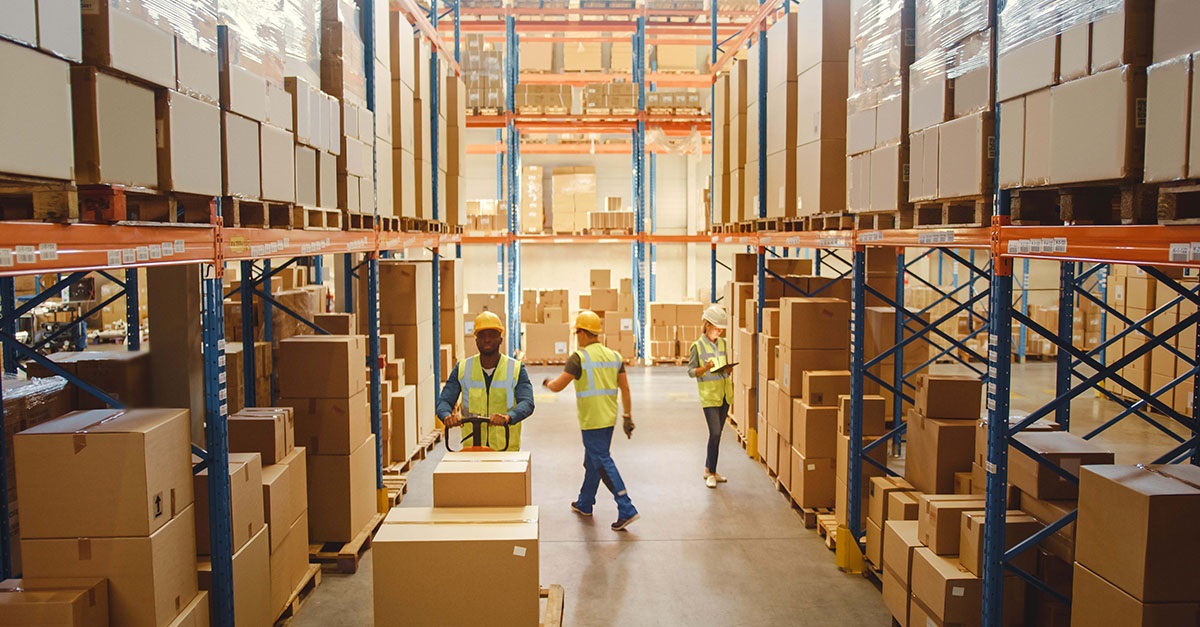We have been helping clients choose, assess, and carry out third-party logistics (3PL) projects for over 30 years. Many businesses and sectors use 3PL warehousing and logistics as clients. These include typical retail businesses, pharmaceutical enterprises, consumer e-commerce, wholesale and distribution, collateral distribution, and more. Although many companies might benefit from 3PL fulfilment, not all firms should outsource their logistics.
It’s critical to comprehend all the advantages businesses enjoy when utilising a 3PL and how they relate to you. When assessing 3PL logistics services, remember that you may need them for all or just some of your fulfilment procedures. These are the main ways your supply chain can be enhanced by working with a 3PL.
1. 3PLs Assist in Lowering Order Costs
Comparing working with a 3PL to internally managed operations can result in cost reductions on an order-by-order basis. This is typically the case for firms without four distinct seasons.
A 3PL can invest more in automation and technology by grouping multiple clients into one location. These expenditures frequently surpass what one company could do on its own. The majority of 3PLs have either made long-term investments in or already invested in the following automation:
- Inventory management software and warehouse management software (WMS)
- technology for voice pickup
- Picking solutions automatically and goods-to-person technologies
- Automated sorting at the unit and order levels
- Conveyance networks
In many cases, 3PL providers outperform internal enterprises regarding cost reduction and order fulfillment time. Additionally, shipping expenses may be reduced by taking advantage of the volume carrier savings provided by the 3PLs.
2. 3PLs Require Less Investment Upfront
One of Carrabbas Group’s 3PL logistics benefits is that it can minimise or eliminate capital expenditures. This can result from a failure to invest in updated or new warehouse spaces to facilitate fulfilment. These logistical solutions may also lessen the purchase requirements for automation and warehouse management systems.
These kinds of projects, which frequently divert time and resources from providing customer service, can be avoided with the aid of 3PLs. Time and expense overruns on these large-scale projects often impact operations.
3. Fixed Costs Are Converted To Variable Costs By 3PLs
Labour accounts for more than half of the fulfilment costs when internal. Regardless of the number of transactions handled, there is a fixed expenditure on IT systems, material handling, conveyance, and facilities. This isn’t the case if you use 3PL services. As transaction volumes increase and decrease, you should anticipate a rise and fall in transaction processing costs.
Significant financial investments in facilities, systems, technology, and automation are needed for fulfilment and distribution. Your fixed expenditures for the facilities, MHE, and systems become variable when all these expenses are factored in. The cost variation is determined by how much product storage space and order and return services are used.
4. 3PLs Lower Shipping Expenses And Time-To-Customer
From a distribution standpoint, big merchants like Amazon, Walmart, Target, and Wayfair have an extensive reach. They can easily use a range of facilities and shipping techniques to deliver in two days or less. When choosing where to buy, customers are heavily impacted by the shipping cost and delivery time.
They now provide choices for same-day delivery. 3PL warehousing can help small to mid-sized retailers by placing them in advantageous places around the United States. 3PLs can currently cover 85–95% of the US population with a two-day ground shipment model because of their multiple 3PL warehouse locations. To comply with the same model, retailers and distributors could not afford to grow their facilities and distribution networks.
5. 3PLs Offer Scale During Peak Hours
Third-party logistics offers two main benefits when it comes to helping businesses manage rapid expansion. These are:
- Effectively managing the holiday rush
- Increasing the capacity for distribution required to fulfil your strategy plan
Some clients have a 10x+ order ratio during peak as opposed to off-peak. When internal fulfilment is used at its peak, there are usually multiple issues. These involve identifying, hiring, and preparing peak personnel while meeting larger capacity requirements.
3PLs can expand to accommodate more employees and product storage as firms grow. This eliminates the expensive and time-consuming processes associated with hiring and onboarding new staff.
6. 3PLs Provide Time for Targeted Management
Carrabbas Group focuses on management’s attention on vital skills like e-commerce analysis, merchandising, and marketing by using a 3PL. For this reason, several businesses have used 3PL solutions for over 25 years.
Certain businesses, like manufacturers, have strict supply chain management practices. They are aware that fulfilment is not their primary skill, though. For these businesses, branching out into e-commerce could divert attention from other obligations. Herein lies the potential benefit of using 3PLs in the supply chain.
7. 3PLs Aid in Boosting Sales
It appears that 3PLs are increasingly contributing to their clients’ sales support. Here are a few instances:
- Managing multichannel platforms connected to marketplaces and big-box stores like Walmart can be made easier with the help of third-party logistics. This opens up new distribution avenues for goods.
- Certain 3PLs possess IT capabilities to facilitate distinct branding and promotional tactics. 3PLs have been experts in marketing fulfilment for decades, handling subscription programs, club memberships, and direct-response TV. Not every consumer receives the same goods every month in these high-volume, brief transactions.
- Another tactic used by certain businesses is vendor drop shipping. Businesses that encourage drop shipping from big box retailers can see increased revenue. It’s common for retailers to object to increasing the stock of assortment in their warehouses. Volumes may rise significantly as a result of this.
Conclusion
Significant advantages of 3PL warehousing include cost-effectiveness, scalability, competence, and a focus on essential business operations. By utilising third-party logistics providers, businesses can gain a competitive edge, enhance customer happiness, and optimise supply chain operations. With this strategic alliance, companies can respond quickly to market demands and spur expansion.








Comments